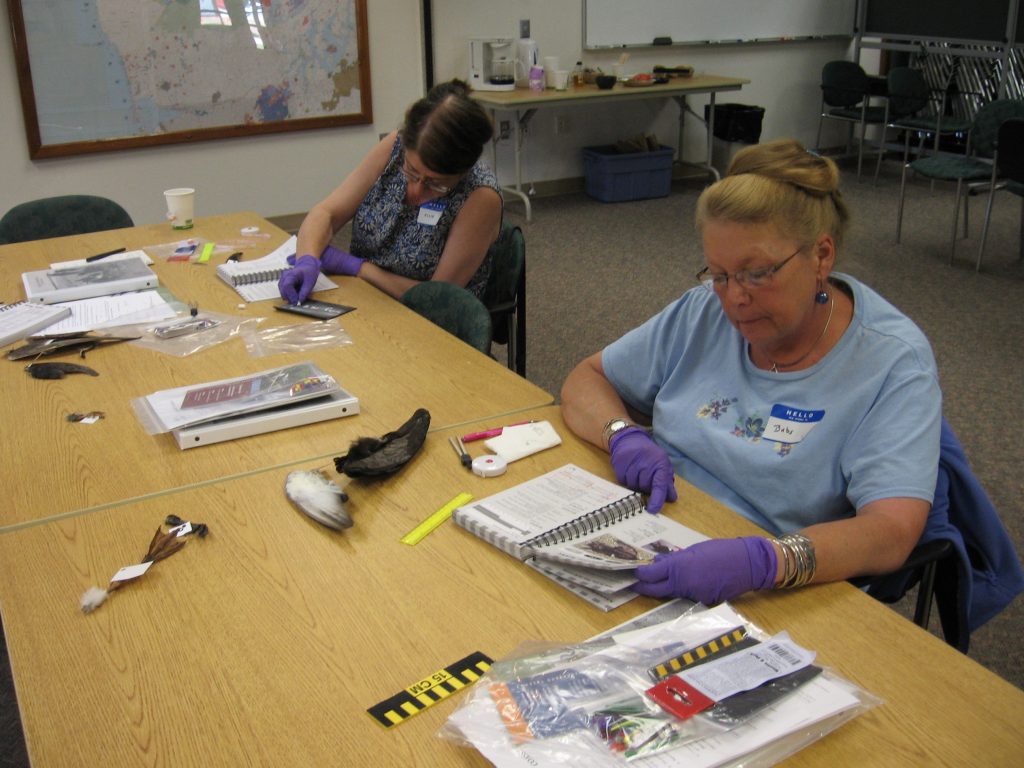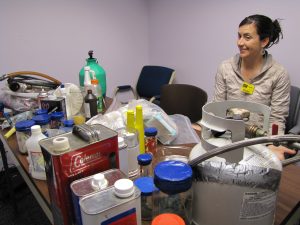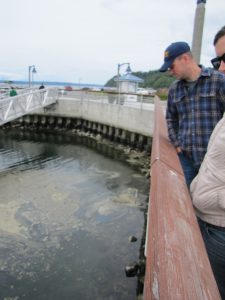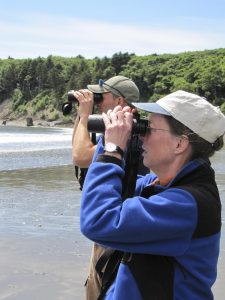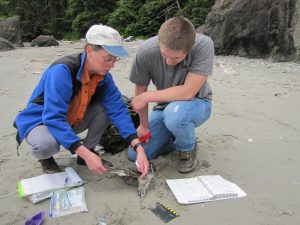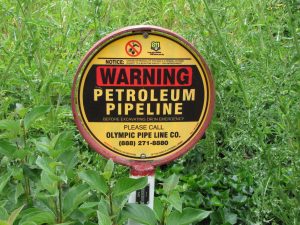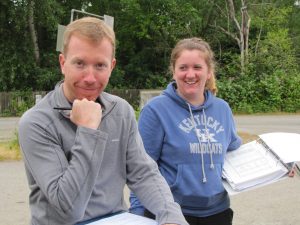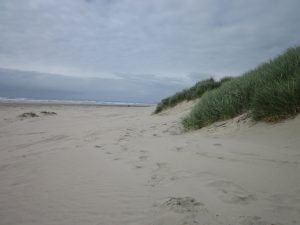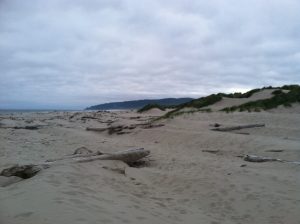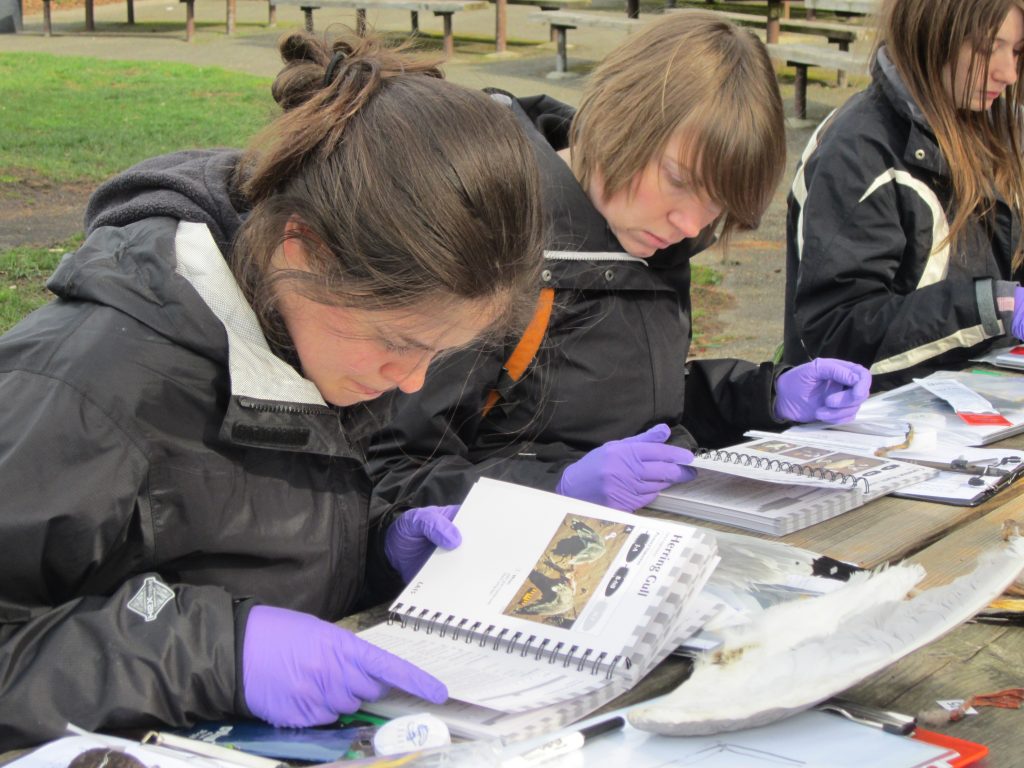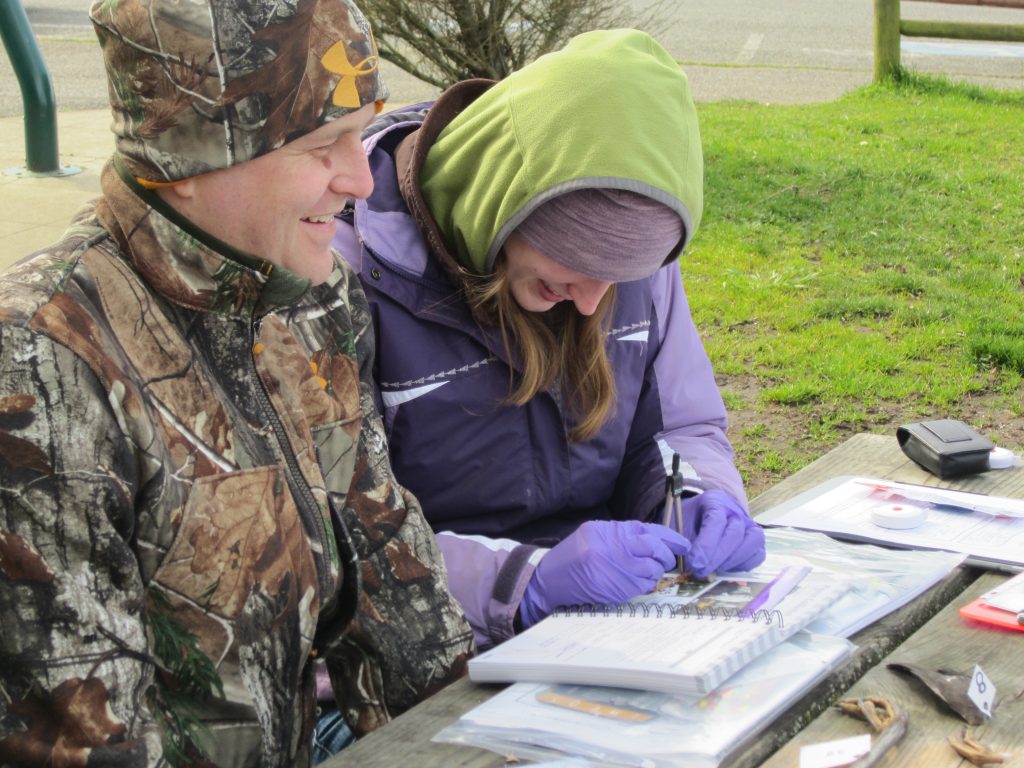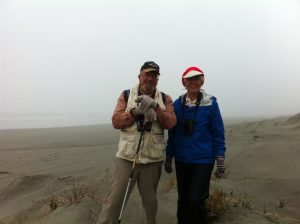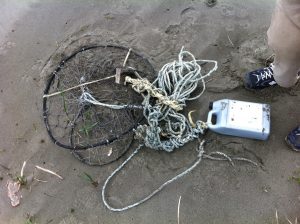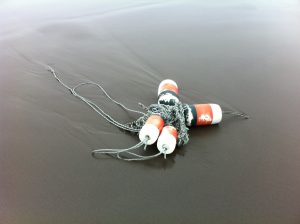This week, Liz and Jane are teaming up Horward Zorzi and Dick Walter’s Spill Response Team at the Department of Ecology – Northwest Regional Office for some on-the-job field experience to fulfill all requirements of their 40-hour Hazardous Waste Operations and Emergency Response (HAZWOPER) certification course.
No, it isn’t part of some new regulation to work with dead birds! This work is funded through a grant from the Washington Department of Fish and Wildlife, Department of Ecology, Department of Natural Resources and the Puget Sound Partnership to increase community preparedness and response during large oil spills in northern Puget Sound, the Strait of Juan de Fuca, and the San Juan Islands. Lots of COASSTers (about 200!) survey and live near these beaches. These are “their” beaches, and come fall, COASSTers will have a chance to receive some extra training (known as the 8-hour HAZWOPER) to assist state and federal agencies in spill response and damage assessment.
But back to the fun stuff. Tuesday we barely arrived at the office before an anonymous call came in about an abandoned barrel on Vashon Island marked “xylene.” Grabbing the proper protective equipment (steel-toed boots required!), we jumped into the response truck with Chad and Dave.
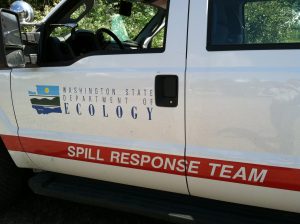
The Department of Ecology Spill Response Team official vehicle: protecting our freshwater and marine waterways.
After a short ferry ride, we arrived at the scene. The barrel is on private property, not the county/city road, so after a quick call to the regional office and then the property owner, we got clearance to proceed. Time to fill out a Hazard Assessment Worksheet (HAW)! Chad and Dave’s gameplan: suit up, test vapors – is barrel intact? If yes, right barrel, test substance inside.
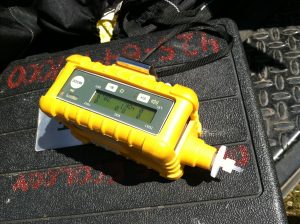
MultiRae sensor does not detect vapors – barrel and cap are intact.
After the barrel is upright, Dave goes in with a huge wrench and a pipette, and brings back a viscous tawny-colored liquid. Pull out the mobile chemistry lab! Dave tests for the presence of oil (it’s mostly oil), water (a little), Ph (about 7), and reactivity (almost none).
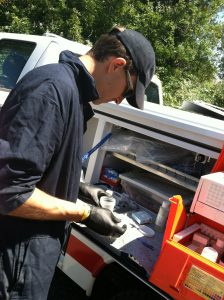
Dave and the mobile chemistry lab (right, in the orange toolbox-like container).
The final test? Flamability. “It’s my favorite,” says Dave, priming and adjusting the propane torch, and holding the glass test tube just the right the distance away.

Flammability? Well, sort of…
The verdict? Not xylene. Not even close. Too viscous, not very flammable, and some black smoke appeared after a good amount of heat. “It’s cooking oil,” says Dave, “call the owners, let them know where to dispose of this, and let’s get those paint pens to re-mark this barrel.” Time to call the regional office again and let them know we’re safe and on our way back. Case closed for Chad, Dave, Liz and Jane.


